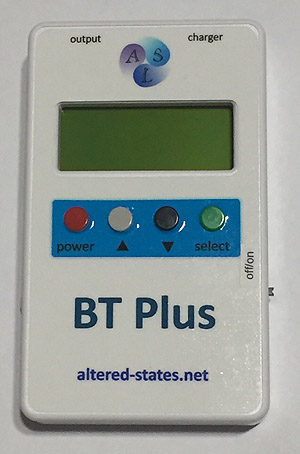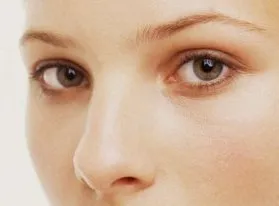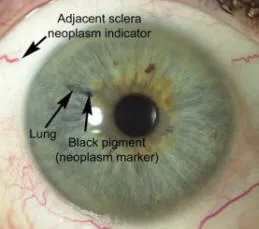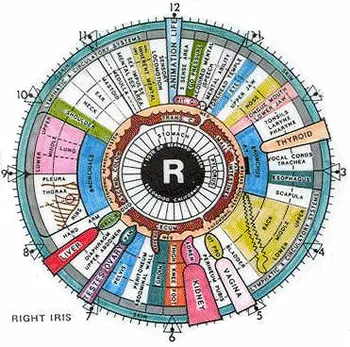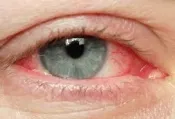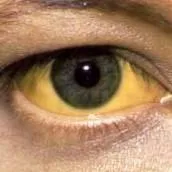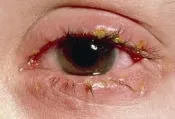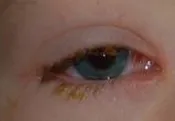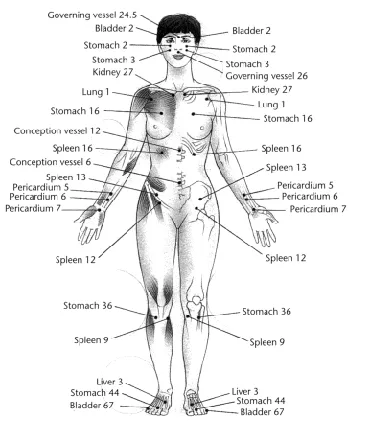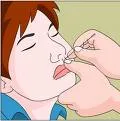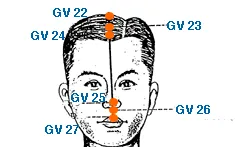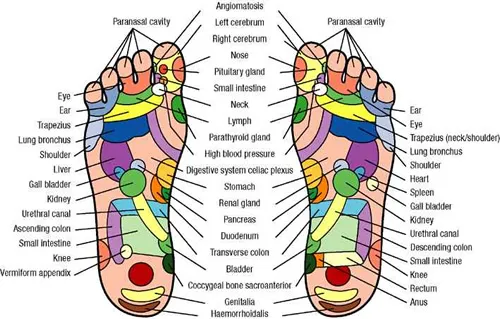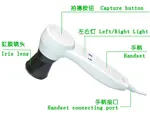Portabable Iriscope for PCNZ$424.50Approx USD$253.15
The eyes have long been known as "The window to the soul" and they are also a window to your body's health. The eyes are a distinctly unique reflection of who and what you are. Your iris-print is like a finger print, it reveals the genetic blueprint of you and your inheritance. Iridology provides you with a wealth of useful information to help you understand what is happening inside your body physically, mentally, emotionally and spiritually. The way iridology works is; thousands of nerve fibers connected
to your cells, tissues, and organs. transmit their information
(via the nervous system), up the spinal cord to the brain,
then map this information on the iris of the eye. By examining
the iris fibers, pigments and iris patterns, iridology can
reveal; your current state of health; show genetic strengths
and weaknesses; areas of inflammation; degeneration; toxicity;
nutritional needs or deficiencies; and your inherent personality
traits. The eyes give a clear and complete picture of our
overall health, alerting us of potential early signs of imbalances
in our body and showing us what areas to care for and support.
, Someone said that the iris is the living image of what the eye has been, what it is, and even what it can become. Jon Miles said, "The iris is like a chalkboard which does not get erased."
Iridology is the diagnostic method that examines the patterns and changes in the iris of the eye that may suggest a health issue or disease. Iridology, or iris analysis or iris diagnoses, is a method of alternative medicine that is used to analyze a person’s health status by examining the colors, components of the iris, pupil and sclera of the human eye. When people notice an attractive person, the first thing they may notice is the other person’s eyes, often referred to the windows of the soul. When you look into someone’s eye’s you can often tell how the person is feeling, if they are lying, angry, ill or in love. When people are tired or not feeling well, their eyes will lack the usual sparkle or appear dull. Not only are the eyes the windows of the soul, they are also the map to our bodies.
Although some people believe their eye color never changes through out their lives, there are noticeable changes as we grow older or our health changes. These changes can appear as marks or clouds in the iris, the pupils, or sclera of your eyes. Iridologists can assess an individual’s physical, mental, emotional and spiritual health by iris analysis and be able to guide them and show them what measures need to be taken to improve their health.
Iridology (pronounced eye-ri-dol'-ogy) is the science of studying the iris or the colored portion of the eye. According to Mr. Miles, Iridology is based on empirical observations (made by medical doctors and other researchers over the last 300 years) which suggest that certain dysfunctional states in the body are indicated by different textures and color properties within the iris. It is useful for preventative health because these imbalances in the body can be detected early on, giving time for adjustments to be made using natural therapies.
Assessing health through studying the eyes is thought to date back at least as far as ancient Greece and Hippocrates. In the 19th century, this art was revived by a Hungarian called Ignacz von Peczely. As a boy, he was said to have observed how the iris of an owl changed, first when it suffered a broken leg and then as it got better. He went on to make observations of the human iris, often being able to predict someone’s impending illness. After qualifying as a doctor, he drew up the first chart of the iris as a key to health. Peczely and those who went on to develop his work in the early years of the 20th century were ridiculed by the medical establishment.
Doctor Bernard Jensen drew up an extremely detailed iris chart in 1950 relating all of the organs and systems of the body to different parts of the iris. Since then, other similar charts have grown out of clinical experience in Europe and the UK. The area around the pupil is said to signify the stomach, and the area around that represents the intestines.
Dr. Bernard Jensen, put it this way: "Nerve fibers in the iris respond to changes in body tissues by manifesting a reflex physiology that corresponds to specific tissue changes and locations." This means that a bodily condition will translate to a noticeable change in the appearance of the iris. The Innermost Ring -The stomach
The remainder of the iris is divided up into a jigsaw relating to all the other body parts. Modern Iridologists say that the appearance of the iris does not change but that its distinctive pattern gives a unique map of a person’s genetic inheritance. By studying this map, we can identify a our constitutional weakness, for example a tendency towards stomach problems or liver damage. However, they also say that some alterations in the body can show up in slight changes of coloring in the iris. For example, a patch that gets slightly lighter can signify inflammation, and an area that gets slightly darker can mean a build-up of toxins. So the old story about the injured owl’s iris may well have a basis in fact.
Genetic strengths and weaknesses, levels of inflammation and toxicity, the efficiency of the eliminative organs and the state of the digestive system are easily visible in iridology Can you spot the Healthy?
•Iridology analysis can help tune the treatment by Natural Medicine and help us understand their inherited strengths and weaknesses, thereby becoming more personally aware of how to support their present and future health. In Russia, a trial involving 800,000 patients found Iridology to be 85% accurate in diagnosis and is taught to medical students in some European universities. •Iridology is especially useful in assessing the state of the digestive system, being able to distinguish between an under acidic or over acidic stomach and clarify the state of bowel health and tension. •Iridology can often help establish the root cause of disorders and thus aids the choice of effective treatment without recourse to expensive laboratory tests
Why The Eyes? The eyes – and the irises – are direct offshoots from the brain. Hundreds of thousands of nerve fibers make up the optic nerve and many of these end in the iris. Some iridologists say it is for this reason that the eyes – as a result of the information they receive from the brain – are like VDUs, giving an accurate representation of the state of the rest of the body. Others compare it to reflexology, in which the foot is said to be sensitive to what is happening through all the ‘zones’ of the body.
What Your Eye Color Tells You All eyes are categorized as either blue, brown or a mixture of the two.
Lighter eyes are easier for an iridologist to ‘read’. People with blue eyes are said to be more prone to breathing difficulties, while those with brown are more likely to have circulation problems. If your eyes are greenish (a mixture of blue and light brown) then you may be prone to digestive problems. Iridology Is Good For:
Iridology does often not reveal disease and Iridologists do not diagnose. While the iris can reveal some current conditions and stress affecting body systems, it is most useful for prevention and long-term health. The iris is the "colored" part of the eye. It surrounds the contractile center, or pupil. Light enters through the pupil and is focused by the lens into an image on the retina. The nerves of the iris are connected to a part of the brain known as the hypothalamus. It should be noted that there is no evidence that any nerve in the iris is connected to any other part of the body (organ, bone, etc.). The left eye is believed to correspond with the left side of the body and the right eye with the right side of the body. In general, the higher organs (brain, thyroid) are at the top of the iris and the lower organs (kidneys) are at the bottom. In reading the iris to gain insight to the body there are several characteristics that are studied. These include, but are not limited to layers, colors, rings and spots. LAYERS A primary theory of Iridology is that the iris is constructed in layers that represent the four stages of tissue activity. Acute changes
There are 3 main physical eye types:
? Blue-Eyed Type (Lymphatic): At increased risk for problems with the upper respiratory tract, digestive tract, urogenital tract, lymphatic tissues, joints, kidneys and adrenal gland imbalances. ? Mixed-Eye Type (Biliary): This type has discolorations (usually light brown) on top of a blue background. They are at increased risk for liver related problems, digestive tract problems and allergies. ? Brown-Eyed Type (Hematogenic): This type is predisposed to blood disorders and imbalances of minerals, especially calcium. This type should pay attention to the circulatory system, liver, spleen, bone marrow, digestive system and endocrine glands.
Colors over certain areas on the iris correspond to the area of the body as indicated by the maps. You can then decide what types of changes are occurring. White indicates an area of the body working hard to "maintain." Above Photos courtesy of the School of Natural Medicine www.purehealth.com and www.grandmedicine.com RINGS There are numerous rings seen in the iris. Here are a few of the main ones. Scurf Rim or Ring of Purpose is a dark band around the
iris, indicating that the skin is not functioning properly.
These people do not sweat easily (lack of detoxification),
have increased mucous production and kidney stress. They
are "thick-skinned" emotionally. Radii Solaris-radiates out like spokes on a wheel. Where
they occur they poison and inhibit cells. This was first
noticed in sheep over 2000 years ago when they had parasites and
thus is often linked with intestinal problems. Spots may "move" across the iris and are believed to indicate deficiencies or a "blocking" of awareness about a particular organ or system With the phenomenal technical advances in Iridology equipment and the continuous new research, more insight have been gained into Iridology during the last five years than in the previous twenty. What are the benefits of Iridology? Provides a starting point for lifestyle considerations
and education Be Aware some people call Iridology a
fraud but hasn't that We would never recommend that a client rely solely on iridology to predict disease or diagnose an injury. Balance is always are preferred stance HOW CAN IRIDOLOGY HELP ME? Iridology is potentially an integral part of preventive health care. It has the ability to forewarn of approaching difficulties or signs of "disease". Iridology can be a powerful tool, allowing one to determine what is transpiring inside the body from a simple, painless, and economical external vantage point. In effect, iridology will reveal how well your body functions. Improper nutrition and lack of exercise undermines the body's integrity until eventually it becomes unable to reverse damaging toxic conditions through its own natural self-healing mechanisms, becoming susceptible to ailments of a chronic nature. Therefore, nutrition and iridology are inseparable in one's pursuit of a healthy way of life and holistic health care program. Iridology helps us understand our weakness so we may strengthen and cleanse our bodies to obtain our maximum health potential. It brings to us an awareness of how to prevent illness, thus allowing us to earn our most precious earthly treasure--vibrant physical, mental and spiritual health! Iridology can play an important role in preventative medicine at the bioelectric level, which is well on its way to becoming the medicine of the future. The main aim of iridology is to keep you healthy by recognizing
early signs of possible problems and recommending holistic
and natural treatments to prevent them from developing
into more serious problems. Iridology can help to diagnose the disease and potential ill health by studying the iris of your eye. It dose not concerned with named diseases. It can help in restoration and maintenance of health through building up your immunity and life force. You no longer have to spend Mega Dollars to pay a therapist now you can now do it in your own home Conclusion Which Diseases can be helped by NO NEEDLE Acupuncture Acupuncture as a treatment method became very popular, especially during the early 1970's when then President Nixon opened the doors to China. Many of his representatives were in awe when they toured different Chinese hospitals and observed first hand the wondrous results of acupuncture and oriental medicine techniques. By the middle and late 1970's, acupuncture was being taught in oriental medicine universities in the United States and about the same time, different healing professions began teaching brief instruction courses on the subject. So, what is acupuncture and how does it work? These are two of the paramount questions people ask. Of course, the other significant questions are, Can it help me? How long will it take? Since every case is different in terms of length of treatment, and the possibility of helping varies according to the extent of the condition, the only thing that might be answered generically is, "What is acupuncture?"
What about the acupuncture meridians themselves? With electronic Acupuncture one does not need to understand all the technical stuff :) just look at one of the charts here EASY SELF TREATMENT CHART Place your electronic acupuncture tool near the spot and listen,,your Needle less acupuncture unit will find the spot for you,,then just press the button (after reading the instructions:) and it will treat the point automatically What Has Acupuncture Historically Treated? The answer is simple; Most everything.
A wide variety of acute and chronic conditions exist for which acupuncture can be effective. According to the World Health Organization following is the list of indications for which acupuncture can be used Which Diseases can be helped by NO NEEDLE Acupuncture
YOU CAN DO THIS THESE FREE COURSES MAKE IT UNDERSTANABLE Two Irodology courses Here and Here to
help you
Five thousand years
of ancient Chinese medical practices It can help aging cells to recover, normal metabolism
and circulation, improve the ability of aging cell to repair
, recover and regain youthfulness. Cosmetic treatments like removing spots, softening and whitening skin and wrinkle decreasing maybe noticed Functions of Locating Acupoints , Organs, health Measurement of Acupoints searching and measurement according to the data displayed on the LCD Screen:
|



